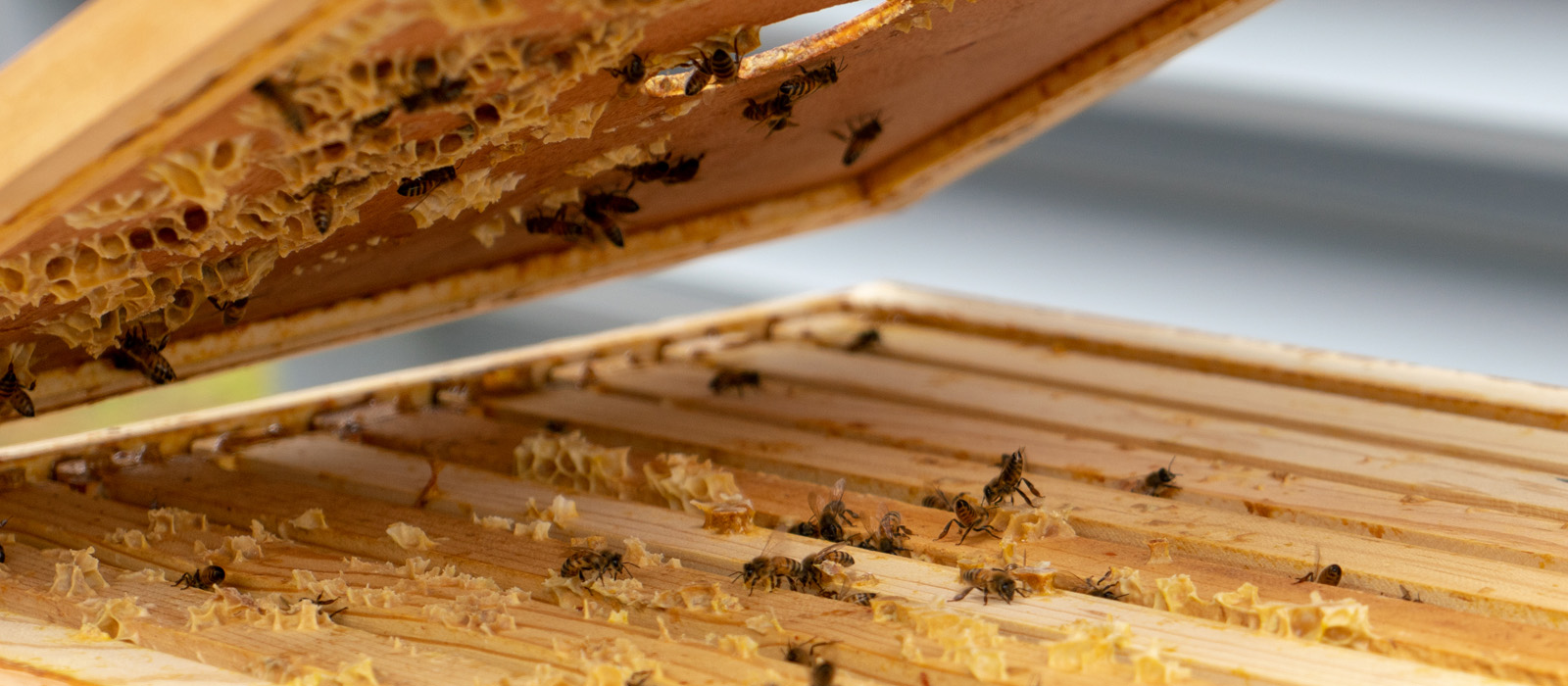WE LOVE BEING SOCIAL BEEKEEPERS
Wright & Burnside Business Campus is happy to be partnering with Alvéole - an organization that installs urban beehives across North America and Europe! In recent years, there has been a decline in honey bee population worldwide. This is a cause for concern since bees are on of many pollinators contribute to one-third of the world’s crop production, and ultimately, the food on our plates. Through this partnership, our Campus is part of a solution to help “honey bees” and to educate people about beekeeping.
Our hive is located onsite close to the entrance along 100 Venture Run. Alvéole will provide decidated, professional beekeepers to check the hive to make sure each little buzzer is happy, healthy and thriving throughout the year. Beyond just helping the environment, each hive creates over 100 lbs. of honey for us per year which will be harvested for us by Alvéole. Now that’s what we call a win-win!
AND... WHAT ABOUT THE BEES?
Alveole and WBBC work together to create a safe environment for a special breed of Italian bees, selected for their docility. The firm has been installing hives at hundreds of companies, schools and private homes for years, and have never had to deal with any major issue related to bee stings. Of course, the possibility of getting stung close to a beehive exists, but it’s very slim.
As for our Campus bees... they live their own lives, do wonderful things and help the environment. They are not interested in the presence of humans. Their daily quest is to bring nectar, pollen, resin or water to their colony to ensure it's development. Unless aggression is demonstrated towards them, bees have no motivation to sting. They do however, have an amazing capacity to discover and benefit from all sorts of floral resources and do so in a wide radius around the hive. So... you do not need to do anything different in your workday to adjust to having the bees on site. They will be located far enough away on the campus grounds so that they can do their job without interrupting yours! It's all in a day's work.
OUR BEEHIVE
At the height of the season, each hive contains up to 50,000 individuals.
____________
Approximately 90% of the bees in the hive are workers (females), and 10% are drones (males). They dedicate their lives to serve the colony - they never leave it for another. Each worker bee lives from 3-6 weeks in summer and 3-6 months in winter. As they get older, they are given increasingly complex tasks.
____________
Bees can see color, particularly blue, purple and violet.
____________
Honeycombs are quite literally the heart of the beehive. Each cell in the honeycomb is built from wax
secreted by the bees. These cells are used to store all of the elements that are crucial to the survival of
the colony and its development: resources (nectar, honey and pollen) and brood (eggs, larvae and pupae).
____________
There is only one queen per hive. In ideal conditions, Her Majesty can live for up to five years. She requires a
court of bees to help feed, hydrate and clean her, as she is too busy laying up to 2,000 eggs daily to do it herself.
____________
Male bees within the hive do not have stingers. Instead, they have a reproductive system. Drones do not
forage for resources, as their primary role is to mate with a virgin queen from another hive.
____________
Worker bees may only live between 30 and 45 days, but they occupy a variety of different roles during
that time: cleaning, nursing, building, fanning, guarding and foraging.
____________
During the winter, the bees will stay comfortably in the warmth of their hive, where they’ll maintain an
internal temperature of up to 35 degrees Celsius.
____________
When winter is over, strong hives are divided into several smaller ones - a bit like perennial plants - to
distribute the hive’s strength and population size.



